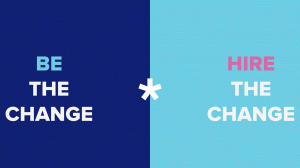Applying the concept of work-life balance is already something that many people struggle with. When it comes to people working in the non-profit sector, it can be even harder, as professional and personal interests can be closer than in any other profession. But how do you find a balance between your personal and professional life when you are really passionate about something?
Sarah is a dedicated program manager at a human rights NGO and has her days filled with coordinating refugee support programs, a work that fulfils her. Her evenings and weekends are often spent attending protests, organising community meetings or responding to urgent calls from beneficiaries. She checks her work emails after hours, takes calls from volunteers during her supposed rest time, and sometimes even works a little longer, knowing the impact her work could have on the project if she were to finish by the end of the day.
After working in the non-profit sector for more than 15 years, I have seen cases like Sarah's all too often. Like many third sector workers, Sarah struggles with the guilt of setting limits when she knows there's always more work to do, more people to help and more causes to fight for. Unfortunately, the emotional labour of being constantly engaged in social change, both professionally and personally, can often have an impact on individual wellbeing, leading to signs of burnout that many often ignore in the service of the greater good.
Unfortunately, burnout rates are high in the nonprofit sector. According to a survey conducted by The Chronicle of Philanthropy in 2024:
- More than 50% of nonprofit leaders struggle with work-life balance.
- Nearly 60% of responding nonprofit leaders are struggling with staff burnout or turnover due to higher paying offers.
- Nearly 50% of nonprofits find it difficult to fill staff vacancies.
As I continued to research this topic, I came across this book called Burnout: The Secret to Solving the Stress Cycle by Amelia and Emily Nagoski. In it, the authors introduce us to the concept of Human Giver Syndrome (HGS). The term, inspired by the work of philosopher Kate Manne, describes the belief that certain individuals (the 'givers') are morally obliged to prioritise the needs, comfort and success of others (the 'humans') at the expense of their own wellbeing.
This dynamic is particularly relevant in the non-profit sector due to the mission-driven, service-oriented nature of the sector. Here are some ways in which HGS can manifest itself in nonprofit work:
Mission-driven over-commitment:
Nonprofit professionals often feel a moral obligation to "save the world" or serve their communities, which is consistent with the self-sacrificing mindset of HGS. This can lead to overwork, neglecting personal boundaries and ignoring self-care because the mission feels too urgent to pause.
Compassion Fatigue:
Nonprofit workers often work with communities facing significant challenges, such as poverty or trauma. The emotional toll of constantly providing support while suppressing one's own needs is consistent with the HGS expectation that givers should not burden others with their emotions or stress.
Guilt around self-care:
Many nonprofit workers feel guilty about taking time off or prioritising their health because they compare their struggles to those of the people they serve. This guilt reflects HGS's internalised belief that taking care of one's own needs is selfish.
Low salaries and financial stress:
Many nonprofit workers earn low wages, which increases personal stress and reinforces the expectation that their work is a "labour of love" rather than something that deserves fair compensation. This financial burden can exacerbate feelings of burnout while perpetuating the belief that they should endure hardship for the benefit of others.
What can you do to protect yourself from burnout?
The most important thing you can do for your nonprofit is to make sure you're prioritising yourself and managing your stress so you can continue your mission. Implementing effective work-life balance strategies begins with setting clear boundaries between professional and personal time. That's the starting point. Then there are are some other strategies that can really help:
- Set boundaries and say no: Learn to say no to tasks or requests that overwhelm you, and set clear boundaries to protect your time and energy. Delegate responsibilities whenever possible.
- Prioritise self-care: Make self-care non-negotiable. Schedule time for rest, hobbies, exercise and activities that help you recharge and end the stress cycle.
- Reframe guilt and challenge expectations: Recognise that prioritising yourself is not selfish - it is necessary. Challenge societal expectations that demand constant self-sacrifice and focus on aligning your actions with your personal values.
- Build a supportive network: Surround yourself with people who respect your boundaries and promote your well-being. Communicate openly about your needs and seek mutual care in relationships
- Focus on what really matters: Let go of perfectionism and prioritise essential tasks over unnecessary commitments. Learn to differentiate between what's urgent, important or simply imposed by external pressures.
What can the organizations do to help you?
First, research shows that nonprofits with strong work-life balance policies have 30% higher retention rates, demonstrating the tangible benefits of prioritising employee wellness. Second, this correlation between balanced work practices and organisational success challenges the common misconception that longer hours equate to greater impact. In fact, employees who maintain healthy boundaries are 21% more productive.
- Encourage self-care: Normalise taking breaks, setting boundaries and prioritising personal health without guilt.
- Acknowledge emotional labour: Recognise and value the emotional toll of nonprofit work as part of professional responsibility.
- Set realistic goals: Break down large tasks into achievable goals to reduce feelings of overwhelm.
- Foster supportive environments: Create spaces where colleagues can share experiences, debrief challenges, and build community through caring for one another.
- Advocate for fair compensation: Push for better salaries and resources to reduce financial stress on employees.
- Be a role model as a leader: employees who see their leader /manager practicing work-life balance (finishing work at the normal time, not sending emails after hours, etc.), feel much more comfortable and inspired to do the same.
Work-life in balance
For nonprofit professionals seeking to improve their work-life balance, the key is to combine organisational support with personal responsibility. This means advocating for flexible arrangements, practising regular self-care and using effective time management techniques. By prioritising these aspects, third sector workers can maintain their passion for social impact while preserving their personal well-being, ultimately leading to more sustainable and effective charitable work.
As for Sarah, this is what happened to her : )
After realising the toll that constant availability was taking on her wellbeing, Sarah set strict boundaries to transform her work-life balance. She designated specific 'work blocks' in her calendar, including a clear cut-off time of 6pm for both her NGO work and activism. By communicating her new schedule to colleagues and volunteers, she set expectations about her availability and trained them to respect her free time unless there was a real emergency. Sarah also joined a weekly meditation group and scheduled regular exercise sessions, giving these self-care activities the same priority as work meetings. This structured approach not only improved her productivity during work hours, but also allowed her to be more present and energised during her activist endeavours, ultimately making her more effective in both roles.
Sources:
- State of Nonprofits 2024: What Funders Need To Know: here
- Burnout Still Plagues Nonprofits, New Study Finds (The Chronicle of Philanthropy): here
- Burnout: The Secret to Solving the stress cycle: here
--------------------------------------------------------------
About the author

Caroline d'Essen is a personal development coach with over 15 years' experience in the not-for-profit sector including 12 years at Avaaz.org. She has struggled to find her own work-life balance and now helps others find theirs.
You can sign up for her newsletter here: The Career Break Diaries
More about her work at www.caroldessen.com
To connect with her: www.linkedin.com/in/carolinedessen










